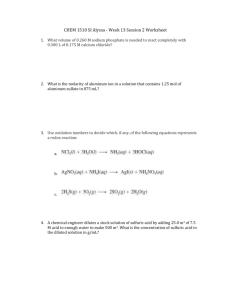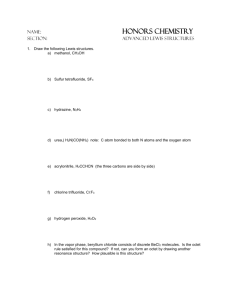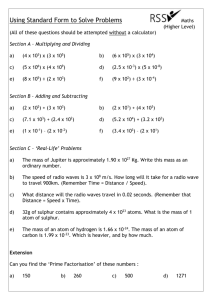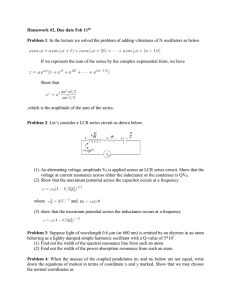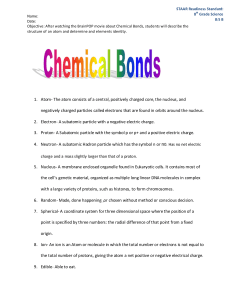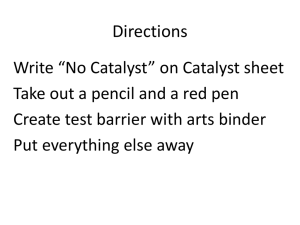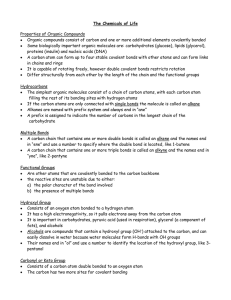Summary #2 Tricks for Drawing Lewis Structures of Oxyanions
advertisement
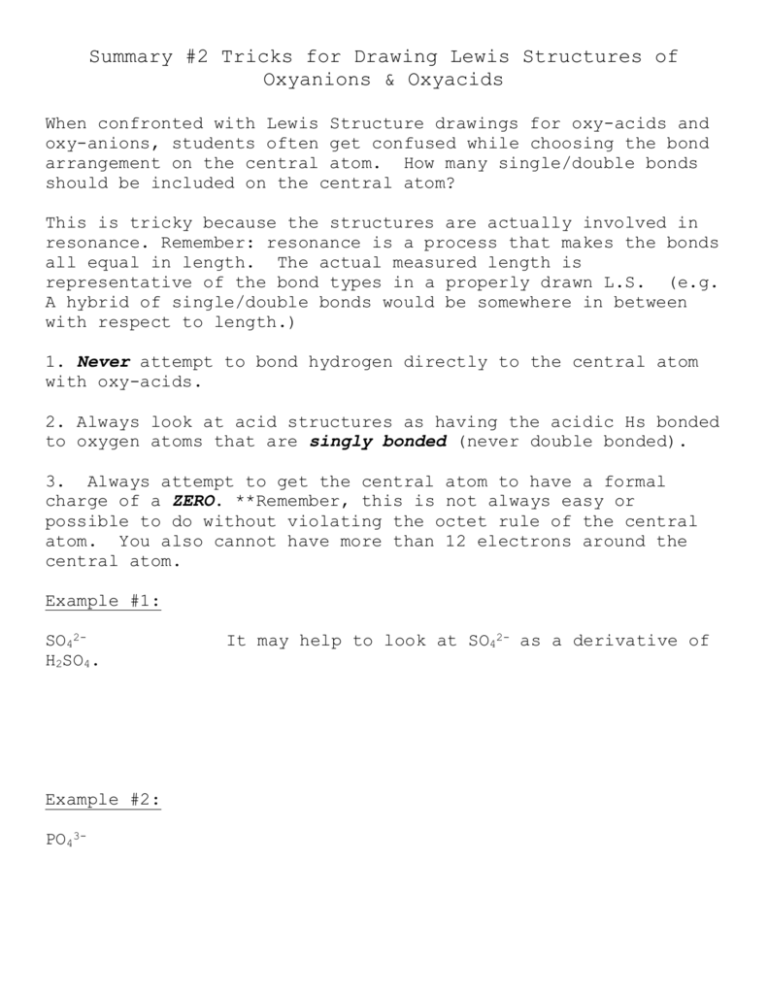
Summary #2 Tricks for Drawing Lewis Structures of Oxyanions & Oxyacids When confronted with Lewis Structure drawings for oxy-acids and oxy-anions, students often get confused while choosing the bond arrangement on the central atom. How many single/double bonds should be included on the central atom? This is tricky because the structures are actually involved in resonance. Remember: resonance is a process that makes the bonds all equal in length. The actual measured length is representative of the bond types in a properly drawn L.S. (e.g. A hybrid of single/double bonds would be somewhere in between with respect to length.) 1. Never attempt to bond hydrogen directly to the central atom with oxy-acids. 2. Always look at acid structures as having the acidic Hs bonded to oxygen atoms that are singly bonded (never double bonded). 3. Always attempt to get the central atom to have a formal charge of a ZERO. **Remember, this is not always easy or possible to do without violating the octet rule of the central atom. You also cannot have more than 12 electrons around the central atom. Example #1: SO42H2SO4. Example #2: PO43- It may help to look at SO42- as a derivative of Example #3: ClO3- **Example #4: Nitric acid Example #5: Nitrous acid Example #6: Phosphorous acid Example #7: Iodous acid Example #8: Perbromic acid Example #9: Carbonic acid
